Iktomi – Native American Spider-Trickster Spirit Whose Stories Teach Moral Values
Ellen Lloyd - AncientPages.com - Like many other mythological tricksters, Iktomi finds himself in constant trouble. He is very destructive, primarily to himself. Iktomi likes to play games and trick people, but in most cases, his intricate plans to harm others backfire, and he finds himself in hopeless situations.
Being a shapeshifter and spider-trickster in Lakota mythology, Itkomi is famous for using strings to control humans like puppets.
Artist Gertrude Spaller's rendition of Iktomi sitting by the fire. Credit: Public Domain
Itkomi is an entertaining character whose memory is kept alive through stories passed down from generation to generation.
Lakota people, one of the three Sioux tribes of Plains currently living in North and South Dakota, do not have any written mythology records about Iktomi. Still, he has lived on in the retelling of tales. Iktomi is a cultural hero for the Lakota people, and his stories are often told to youngsters to teach them a lesson.
Iktomi is not as charming as the Native American trickster god Kokopelli, who brought happiness to people, but it would be wrong to label him evil. Like all trickster characters, he has a good and bad side. His complicated nature makes him unpredictable.
Readers of Ancient Pages may recall the Native American legend about Coyote, the trickster god. Some tribes believe that the Coyote is the bearer of all evil and that he brings winter and even death. But there are also Native Americans who say that Coyote is a sacred animal. As the teacher of wisdom, the trickling god Coyote must be properly approached. If this happens, this beautiful animal can share its priceless wisdom with people.
Another interesting trickster in Native American mythology is Pukwudgie. As mentioned earlier in our previous article, generally, according to Northeastern Native American folklore, the Pukwudgies were once friendly toward humans. Still, with time, it changed, and the Pukwudgies turned against humans, so it would be best to leave them alone and never annoy them.
The nature and behavior of mythological tricksters can vary with time, and it’s, therefore, tricky to label any of them as pure evil beings, not even Iktomi. They can be very beneficial if he chooses to be.
Iktomi Was Stripped Of His Title Because He Was A Troublemaker
Being the son of the creator god Inyan (Rock), one of the most powerful spirit deities before the beginning, Iktomi should have become a powerful spirit. Still, he lost the right to his title because he constantly misbehaved.
As the legend goes, Iktomi, named Ksa from the beginning, was born from the Cosmic Egg. Iktomi had a younger brother, Iya., who was a storm monster.
Iya had an endless appetite and could swallow plenty of humans and whole villages, but this did not turn him into an evil entity. To the Lakota people, Iya was a sacred being who only performed his duty.
Many of the stories about Iktomi are very funny, but some tales serve as a warning to the world. In those stories, Iktomi is a severe figure who comes to save people and help them protect themselves from evil. Iktomi, on the other hand, was a troublemaker, and he is considered a negative role model who behaves socially inappropriately by Sioux standards.
Iktomi was the size of an ordinary human, but he had a big round body like a spider, with slender arms and legs. He is described as a spider or spider-man. It is said that he possesses extraordinary magical powers that he uses either to harm or help people.
Among the Lakota people, there is a prophecy that Iktomi, as a spider, would one day spread his web over the land. Some modern Native Americans believed modern technology, such as our internet and the World Wide Web, are the signs this prophecy has been fulfilled.
Iktomi’s Meeting With The Rabbit And The Wise Advice He Received
There are many wisdom stories dealing with Iktomi. One describes his meeting with the rabbit. Iktomi, who was rather vain, went one day to a pond. He saw his reflection in the water and sat admiring himself for hours. He thought of himself as very handsome and couldn’t stop looking at his own reflection.
Infatuated with himself, Iktomi decided to go to the same pond the next day and admire his beauty, but this time something was different. When he gazed into the water and saw his reflection, he was not so handsome anymore. Iktomi saw a distorted face, and this upset him. He closed and opened his eyes several times, hoping the ugly image in the water would vanish. He desperately wanted to gaze at his beautiful face again, but nothing happened.
Frustrated, Iktomi left the place. He decided to look for food to get a new perspective. Then it started to rain heavily, and Iktomi hurried back to his den. On his way back, he stopped at the pond and looked again at his reflection.
A modern depiction of Iktomi. Credit: Wikipedia, CC BY-SA 3.0
As Joseph M. Marshall writes in his book, The Lakota Way of Strength and Courage,” Iktomi knelt at the water’s edge to see if his reflection was there. A dark, indistinguishable shadow peeked back at him. The shadow had no eyes, no nose, and no mouth. It was only a dark blob. A little frightened, Iktomi jumped away and hurried back to his den to get out of the rain, all the while wondering whose reflection he had seen. It certainly was not his.
Iktomi awoke the next afternoon. He was hungry again but also angry. He was confident that the pond was playing tricks on him. As he paced inside a thicket, Rabbit happened by and cautiously greeted the Trickster.
It was a fortunate meeting since Iktomi wanted to talk to someone about the pond. He summed up his not-so-satisfactory encounters with the pond, complaining that it was showing him reflections that were not real. Rabbit pondered Iktomi’s story for a moment and concluded. He revealed to Iktomi that all of the reflections were indeed his, but each appeared different and even strange, because of the sun, the wind, and the rain.
This answer, of course, did nothing to enlighten Iktomi. Which of those reflections was he to believe if they were all of him, he asked Rabbit. Rabbit’s response was simple and truthful. There was no choice but to believe them all, no matter how good or strange or strange they appeared. And then Rabbit offered one final bit of advice: “If you do not know who you are, then it does not matter what you believe.”
Many Native American myths and legends have a deeper meaning, and the stories of the Indians can be used as a guide on how to find the right path in one’s life. The subject of Iktomi is often used to teach the values of morals and good behavior.
Updated on November 30, 2023
Written by Ellen Lloyd – AncientPages.com
Copyright © AncientPages.com All rights reserved. This material may not be published, broadcast, rewritten or redistributed in whole or part without the express written permission of AncientPages.com
Expand for referencesMore From Ancient Pages
-
 Gigantic Engravings Of A Giraffe Created Long Before Egypt As We Know It Existed
Civilizations | Jan 14, 2015
Gigantic Engravings Of A Giraffe Created Long Before Egypt As We Know It Existed
Civilizations | Jan 14, 2015 -
 Mysterious And Unexplained Encounter With Unusual Tiny Beings In Italy – The Thing – Part 1
Featured Stories | Jan 15, 2022
Mysterious And Unexplained Encounter With Unusual Tiny Beings In Italy – The Thing – Part 1
Featured Stories | Jan 15, 2022 -
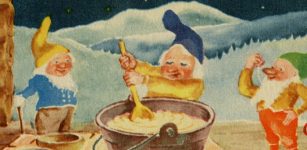 How Norwegians Expressed Resistance Against Nazi Occupation Using Christmas Cards
Featured Stories | Dec 21, 2023
How Norwegians Expressed Resistance Against Nazi Occupation Using Christmas Cards
Featured Stories | Dec 21, 2023 -
 Anglo-Saxon Watermill Discovered In Buckinghamshire, UK
Archaeology | Mar 13, 2023
Anglo-Saxon Watermill Discovered In Buckinghamshire, UK
Archaeology | Mar 13, 2023 -
 Rare Find Provides New Insight Into Etruscan Life Under Rome
Archaeology | Sep 3, 2022
Rare Find Provides New Insight Into Etruscan Life Under Rome
Archaeology | Sep 3, 2022 -
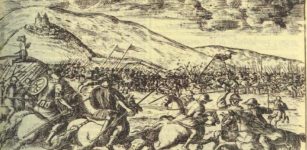 On this day in history: The Battle of the Frigidus – Sep 5, 394 AD
News | Sep 5, 2015
On this day in history: The Battle of the Frigidus – Sep 5, 394 AD
News | Sep 5, 2015 -
 Ancient Fossil Found In Sahara Suggests Loch Ness Monster Could Be Real
Archaeology | Jul 27, 2022
Ancient Fossil Found In Sahara Suggests Loch Ness Monster Could Be Real
Archaeology | Jul 27, 2022 -
 Early Humans In Europe Were Making Fires At Least 250,000 Years Ago – New Study
Archaeology | May 18, 2023
Early Humans In Europe Were Making Fires At Least 250,000 Years Ago – New Study
Archaeology | May 18, 2023 -
 Secrets Of Namibia’s Fairy Circles Solved – Self-Organizing Plants Are The Creators – New Theory
Archaeology | Oct 21, 2022
Secrets Of Namibia’s Fairy Circles Solved – Self-Organizing Plants Are The Creators – New Theory
Archaeology | Oct 21, 2022 -
 Mythical Biringan City – Invisible Portal To Another World Where Dangerous Engkantos Reside
Featured Stories | Feb 2, 2018
Mythical Biringan City – Invisible Portal To Another World Where Dangerous Engkantos Reside
Featured Stories | Feb 2, 2018 -
 DNA Study Shows Pre-Historic Wallacea Was A Melting Pot Of Human Genetic Ancestries
Archaeology | Jun 9, 2022
DNA Study Shows Pre-Historic Wallacea Was A Melting Pot Of Human Genetic Ancestries
Archaeology | Jun 9, 2022 -
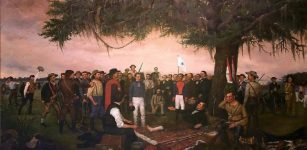 Texas Revolution – A Courageous Fight For Independence
Featured Stories | May 30, 2019
Texas Revolution – A Courageous Fight For Independence
Featured Stories | May 30, 2019 -
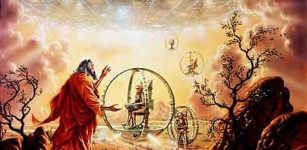 God’s Personal Flying Vehicle Described In ‘The Book of Ezekiel’
Biblical Mysteries | Jul 18, 2019
God’s Personal Flying Vehicle Described In ‘The Book of Ezekiel’
Biblical Mysteries | Jul 18, 2019 -
 Queen Teuta: Power-Hungry Villain Who Underestimated The Romans
Featured Stories | Oct 31, 2019
Queen Teuta: Power-Hungry Villain Who Underestimated The Romans
Featured Stories | Oct 31, 2019 -
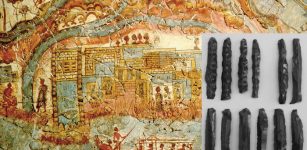 Analysis Of Ancient Tools Challenges Long-Held Ideas About What Drove Major Changes In Ancient Greek Society
Archaeology | Aug 23, 2022
Analysis Of Ancient Tools Challenges Long-Held Ideas About What Drove Major Changes In Ancient Greek Society
Archaeology | Aug 23, 2022 -
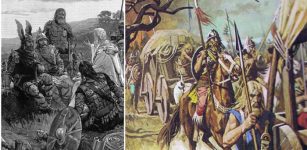 Treasure Of 1,753 Roman Silver Coins Accidentally Discovered In Poland
Archaeology | Apr 1, 2020
Treasure Of 1,753 Roman Silver Coins Accidentally Discovered In Poland
Archaeology | Apr 1, 2020 -
 Uplistsikhe Devastated By Genghis-Khan Hordes But Once City-Fortress Of Queen Tamar
Featured Stories | Apr 12, 2021
Uplistsikhe Devastated By Genghis-Khan Hordes But Once City-Fortress Of Queen Tamar
Featured Stories | Apr 12, 2021 -
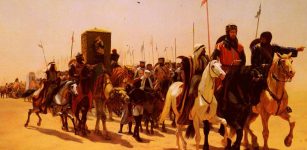 On This Day In History: Richard The Lionheart Ascended The British Throne – On July 6, 1189
News | Jul 6, 2016
On This Day In History: Richard The Lionheart Ascended The British Throne – On July 6, 1189
News | Jul 6, 2016 -
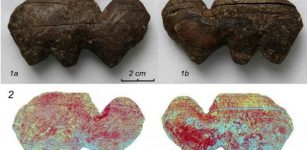 Ancient Mammoth Ivory Carving Technology Of Master Craftsmen – Reconstructed
Archaeology | Aug 27, 2020
Ancient Mammoth Ivory Carving Technology Of Master Craftsmen – Reconstructed
Archaeology | Aug 27, 2020 -
 Ancient Secrets Of The Nine Unknown Men: Guardians Of Forbidden Knowledge Hidden From Humanity
Featured Stories | Aug 28, 2014
Ancient Secrets Of The Nine Unknown Men: Guardians Of Forbidden Knowledge Hidden From Humanity
Featured Stories | Aug 28, 2014


